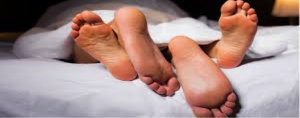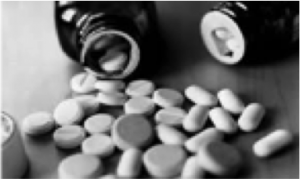Makari Chung
Sex & Drugs but no Rock n Roll
Hypersexuality disorder. Sexual addiction. Compulsive sexual behavior. These are all names for the same disorder/addiction that claims about 2-4% of college-based young adults. This disorder is an obsession with sexual thoughts, urges, or behaviors that can negatively affect a person’s life, job, and relationships. It’s very similar to the drugs your parents tell you to stay away from.
While sex is not a drug, similar regions in the human brain are activated by both drug cues as well as sexual cues. Researchers at the Wolfson Brain Imaging Centre decided that they wanted a better understanding of compulsive sexual behavior (CSB), mainly because it has not been included in the DSM-5. There are severe mental and physical health consequences for the afflicted and having this disorder classified would help take strides towards intervention and even prevention. The DSM-5 is the fifth edition of the Diagnostic and Statistical Manual of Mental Disorders; it classifies and carries the criteria for mental disorders. These researchers felt that “an understanding of CSB and how it might show similarities to or differences from substance-use disorders may help with classification efforts” (Voon 1). Addictive behaviors such as antisocial tendencies and damaged relationships have been the focus of many studies of afflicted individuals. Reactions to sexual cues like porn and other erotic videos have also been studied but they have never shown the comparison of the reactions between subjects with the disorder and healthy subjects. The researchers in this study wanted to highlight the similarities and differences in the reactions of both the afflicted and healthy to sexual cues. They recruited 19 healthy volunteers and 19 volunteers with CSB, showed them porn, then sports, observed their brain activity, then had them rate their sexual desireand liking in addition to assessing how they reacted to these cues. One of their hypotheses was that there would be greater activation to sexually explicit (porn) as compared to non-sexual exciting cues (sports) in regions implicated in drug cue reactivity studies
They recruited 19 healthy volunteers and 19 volunteers with CSB, showed them porn, then sports, observed their brain activity, then had them rate their sexual desireand liking in addition to assessing how they reacted to these cues. One of their hypotheses was that there would be greater activation to sexually explicit (porn) as compared to non-sexual exciting cues (sports) in regions implicated in drug cue reactivity studies
The Study
The videos were classified into 5 conditions: explicit sexual, erotic, non-sexual exciting, money and neutral. They were asked questions like, “How much did this increase your sexual desire?” and “how much did you like this video?” The subjects responded using a 2-button key pad and had fMRI scans to monitor brain activity. All of the subjects were heterosexual males around the age of 25.
The results of the study showed that CSB subjects had greater sexual desire in response to porn than healthy subjects. These scores were associated with activity in a region of the brain that is similar to the findings where cues were observed in substance addiction patients. Researchers fascinated by these similarities suggest that there is a common network in our brains for sexual-cue reactivity and drug-cue reactivity. This means that there may be overlaps “in networks underlying disorders of pathological consumption of drugs and natural rewards” (9). One can conclude that because the brain activity in CSB subjects is similar to drug addicts and that there may be a common network, that CSB subjects are addicts as well. They are simply addicted to sex or sexually explicit content. Making this conclusion from these results will make it easier for CSB to be classified as either an impulse – control disorder or a non-substance “behavioral” addiction. As mentioned before, classification efforts can eventually lead to a better understanding of the disease for prevention and treatment purposes.
brain that is similar to the findings where cues were observed in substance addiction patients. Researchers fascinated by these similarities suggest that there is a common network in our brains for sexual-cue reactivity and drug-cue reactivity. This means that there may be overlaps “in networks underlying disorders of pathological consumption of drugs and natural rewards” (9). One can conclude that because the brain activity in CSB subjects is similar to drug addicts and that there may be a common network, that CSB subjects are addicts as well. They are simply addicted to sex or sexually explicit content. Making this conclusion from these results will make it easier for CSB to be classified as either an impulse – control disorder or a non-substance “behavioral” addiction. As mentioned before, classification efforts can eventually lead to a better understanding of the disease for prevention and treatment purposes.
References: Voon V, Mole TB, Banca P, Porter L, Morris L, et al. (2014) Neural Correlates of Sexual Cue Reactivity in Individuals with and without Compulsive Sexual Behaviours. PLoS ONE 9(7): e102419. doi:10.1371/journal.pone.0102419

